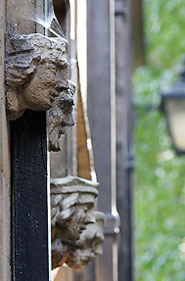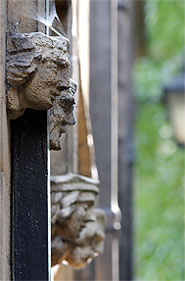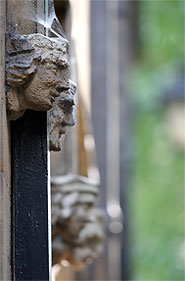
It is essential for a photographer to know how to handle a camera properly.
First, if a digital camera not held properly, there is no amount of software trickery can rescue a bad picture. In fact, they are many people can make a common silly mistake like draping a stray finger over the lens and also creating camera shake because of bad posture.
When using a Dslr camera, a photographer usually make a good grip with their right hand on the camera and make sure their pointer finger can move freely where the other fingers getting a good grip on the camera. The other hand holding the base of the camera on the lens where the thumb finger on the left of the lens. You must remember draw both elbows toward the body and shoot. By doing a proper holding of the camera doesn't make it a good posture. Lastly, needs remember to stand properly with the two legs having a good stand like a tripod base.
Basic Camera Handling Techniques
Never let your camera strap dangle!
To avoid the camera swing and dangle, the strap is handy and provides a fine measure of security for the camera. When shooting, place the strap around your neck. Besides, if the camera is in one hand and the reach of your arm, it will make the strap around your neck unfeasible, so needs wrap the strap around your hand to secure it. Furthermore, if you are handling the camera to a friends, please make sure to place the strap over his or her head which is hanging the camera around his or her neck.
Left hand cradles the camera.
Why say ‘left hand cradles the camera’? It means you needs to bring your left hand low to support the camera which providing a base for the body to rest on. Besides, it also used to stabilize the camera body and convenient to locating it, to perform ‘focus’ and ‘zoom’.
Right hand pulls the trigger.
It means the right hand firmly grip the camera body on its right side. Usually , the pointer finger is used to press the shutter release and the middle finger is used to depress the depth of field preview button which located on the front, right hand side of the body. Besides, the right thumb is used to rotate the knob nearest it, on the top right of the body. Lastly, this change will exist either apertures or the shutter speeds are just depending upon how the camera is set up.
Protect the lens.
The lens needs a shade or filter on the front of it. It performs a dual role which the first is it cuts haze and provides a very slight warming of the image, and the second is the filter can deflect and protect the more delicate lens. Thus, if losing a filter beats irreparably damaging the lens any moment and day.
Using a Tripod
Tripod is one of the useful tools that used by most photographers which can keep the camera steady under slow shutter speed. Besides, a tripod also can prevent blurred and out of focus result.
In conclusion, practice holding you camera body and get comfortable in using your fingers to make adjustments quickly and smoothly. Besides, protect your camera and associated equipment because it is an investment that can last a lifetime and, if cared for and protected, can even save you money!

References:
http://lancephototips.blogspot.com/2007/06/camera-handling.html








